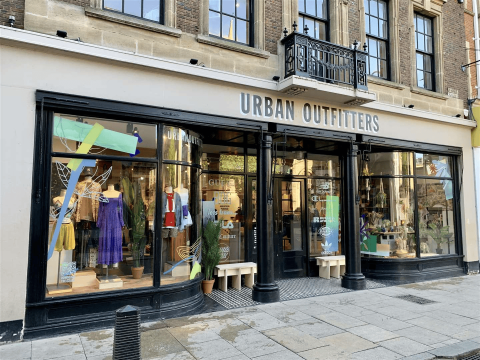Urban Outfitters Stock Price Target Raised to $54 by Zacks Research
Zacks Equity Research has provided a detailed evaluation of Urban Outfitters, Incorporated (URBN), recommending a neutral position for the stock with a 6–12 month price target of $54. While the company demonstrates impressive growth potential and operational efficiencies, several headwinds necessitate cautious optimism.
Strong Financial Performance in Q3 FY2025
Urban Outfitters posted a record-breaking third-quarter performance with sales increasing by 6.3% year-over-year (YoY) to $1.36 billion. Gross profit grew by 9.4% to $497.3 million, with a 36.5% gross margin, an improvement of 105 basis points driven by higher merchandise margins and reduced markdowns.
The company's diversified brand portfolio, including Anthropologie and Free People, contributed significantly, with Free People achieving a 10.3% sales growth. Meanwhile, Nuuly, Urban Outfitters’ rental apparel service, saw revenue surge 48.4%, fueled by a 51% rise in active subscribers.
Stock Fundamentals and Valuation
| Metric | Value |
|---|---|
| Current Price | $50.66 |
| Price Target | $54.00 (6–12 months) |
| Market Cap | $4.8 billion |
| 52-Week Range | $33.86 - $52.68 |
| P/E Ratio (TTM) | 14.1 |
Despite solid fundamentals, URBN faces challenges with rising SG&A expenses, which increased 6.7% YoY in Q3, driven by higher marketing costs and payroll expenses. These expenses, if unchecked, could pressure margins further.
Technical Analysis: Candlestick Patterns
The daily candlestick chart for URBN highlights a bullish continuation pattern:
Support Levels: $48 and $46.50
Resistance Levels: $52.68 (52-week high)
The stock is trading near its upper resistance zone, suggesting a potential breakout if momentum continues. The Relative Strength Index (RSI) indicates the stock is nearing overbought territory, which warrants caution for short-term traders.
Fibonacci Retracement Levels
Using the 52-week high ($52.68) and low ($33.86), the Fibonacci levels are calculated as follows:
| Level | Price ($) |
|---|---|
| 23.6% | 38.50 |
| 38.2% | 42.93 |
| 50.0% | 46.27 |
| 61.8% | 49.60 |
| 76.4% | 51.95 |
The 61.8% retracement level at $49.60 is a critical support area, aligning with the stock's current consolidation zone.
Support and Resistance Analysis
Immediate Support: $50
Key Resistance: $52.68 (52-week high)
If the stock breaches the $52.68 resistance, it could move towards the $54 target. However, failure to maintain support at $50 may lead to a retest of $48, a crucial support level.
Strategic Initiatives Driving Growth
Urban Outfitters continues to capitalize on:
Anthropologie’s Success: The brand has achieved double-digit operating income growth for eight consecutive quarters, fueled by strong demand for apparel and accessories.
Nuuly Expansion: With 300,000+ active subscribers and a new 600,000-square-foot fulfillment center, Nuuly is positioned for sustained growth in the rental apparel market.
Free People Movement: This activewear segment saw 30% YoY growth, highlighting its appeal among younger demographics.
Industry Challenges and Risks
While the company has showcased resilience, challenges include:
Rising SG&A Expenses: Higher costs for marketing and payroll could impact margins if revenue growth slows.
Macroeconomic Uncertainty: Geopolitical tensions and inflationary pressures may dampen consumer discretionary spending.
Fashion Obsolescence: Rapidly changing trends necessitate continuous innovation to maintain relevance.
Competitive Landscape
Urban Outfitters competes with brands like American Eagle Outfitters (AEO) and Abercrombie & Fitch (ANF). Both rivals are leveraging aggressive pricing strategies and innovative offerings to capture market share, increasing pressure on URBN to innovate and sustain profitability.
Investor Takeaways
Urban Outfitters presents a compelling investment case with strong sales momentum and innovative growth initiatives. However, investors should monitor cost pressures and macroeconomic risks. The stock's P/E ratio of 14.1 is attractive relative to the industry average, making it a potential value play for medium-term growth.
